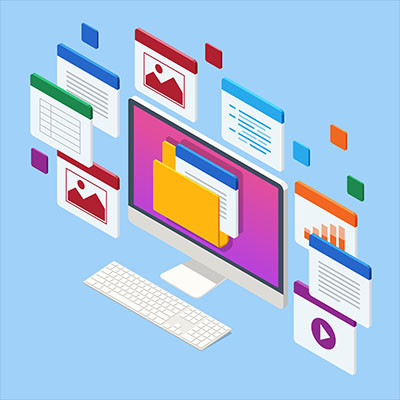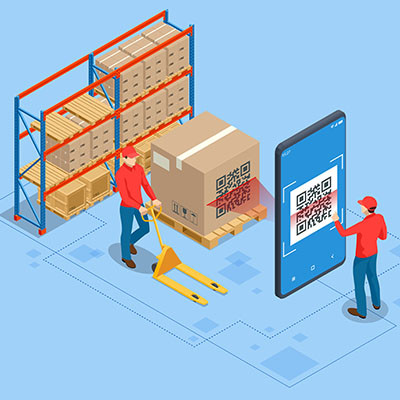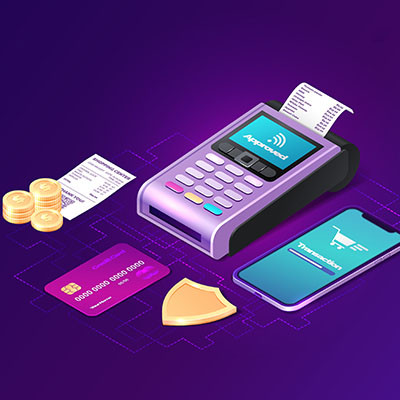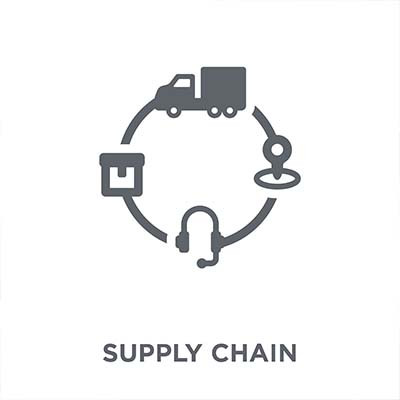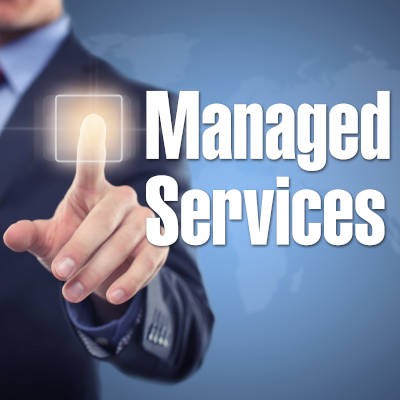We live in an era of upgrades. Consider how often people upgrade their smartphone. Do you give the same care and attention to your business’ technology? Oftentimes users ignore the signs that it is time for an upgrade even when they are crystal clear, just saying to themselves, “I’ll get by just fine.”’ This is not the mentality that will help you move beyond your current productivity. You need to be able to identify when older devices are holding you back and take steps toward replacing them with better, more powerful ones.
k_Street Consulting, LLC Blog
The next time you’re near a desktop, take a peek at the back where the motherboard’s various ports offer the opportunity to connect to different cable types. Many of these cables have overlapping functions—like the capabilities of USB and HDMI. Having said that, however, one of these cables will probably outlast its contemporary.
Given the past few years and the assorted challenges that businesses have experienced during these tumultuous times, it is little wonder that businesses are seeking to alter their operations. Fortunately, today’s technology offers these opportunities to businesses, for prices that are surprisingly attainable for organizations of all sizes. Let’s discuss three such examples you could implement in your own business.
When it comes to storing your business’ documents, you have a couple of options available to you. Some professionals enjoy the chaos of having documents strewn about their office, while others prefer the organization that a system of filing cabinets can bring with it. However, both of these options pale in comparison to the document management system, a technological innovation that could allow your organization to go paperless and improve efficiency in ways you might not have guessed.
Managing business technology is a challenge that many small businesses have difficulty overcoming, and this is largely in part due to the fact that managing technology is not the focus of these small businesses. The inability to overcome IT challenges can hold businesses back that otherwise would flourish. Let’s discuss some of the biggest issues that companies have for IT and how they could potentially be addressed.
Most things in your office depend on technology in some way. That’s just the simple fact of life these days. Let’s examine just how much of your business depends on the technology that powers it and how companies increasingly depend on IT to manage the countless devices that have permeated the office environment.
For the business owner, when deciding what type of technology to invest in, one of the major considerations has to be when you are going to recoup the expense of that investment. No two technology investments are the same, and if you can’t get your money out of it (and then some), why even bother making the investment in the first place?
With more businesses than ever relying on their inventory to get through difficult times, it’s important to know just what resources you have at your disposal. Even if your business doesn’t produce goods or materials, it can be helpful to know what assets you have readily available at any given time. This is where inventory management comes in. Today, we want to give you a brief overview of inventory management and how technology can make it easier.
Your technology resources are likely deployed across your business and while all that IT can really help speed up your business and make it more effective, you also have to watch your technology spending so it doesn’t become a problem as you move your business forward. This month, we are going to get into how to deploy certain resources to help you save some money and at the same time get the technology you need to be more productive.
Many businesses make their profits from selling products, goods, or services to their consumer base, requiring that they have a way to process these transactions in place. The point of sale system is a business’ preferred method of handling these transactions, especially in retail. How can you know which features you might need for a point of sale system?
In the post Prime Day space, you might realize that you have purchased quite a few consumer electronics from the web retailer, and if you did, we hope you found some great deals that you can write home about. But before you throw out your old devices in favor of the new, we urge you to think about the approach you are going to take, as improper recycling and disposal of devices could have negative effects on both the environment and your personal data.
When it comes to business technology, there are sure to be a lot of electrical plugs, so you’ll naturally want plenty of outlets to plug them into. A power trip likely won’t cut it, though. For your needs, you’ll want to invest in a surge protector. Why is the surge protector so much better, you ask? Well, let’s explore this question.
The difference between productivity and innovation is not always clear-cut, but the biggest one is that higher productivity naturally creates innovation… assuming it is supported by the right tools and mindset. How can technology help your business be more creative and innovative in the way it goes about its day-to-day operations?
With cryptocurrency having its heyday over the past few years and the increased attention it has brought the blockchain, it should be no surprise that another trend has arisen. NFTs. or non-fungible tokens, have been all the rage as of late… but is this trend something that might apply to businesses?
It’s fair to say that, across the board, times have been particularly tough as of late for businesses. On top of businesses having to fight through the socioeconomic crisis created by the COVID-19 pandemic and the supply chain issues, they also have to juggle more data than ever.
In short, businesses need reliable and cost-effective ways to manage their critical technologies.
Innovation is a driving force behind business, and it has been for essentially the entirety of human existence. The pandemic has brought about an era where businesses are producing solutions that have many new features, but these features don’t necessarily enhance or add anything to the customer experience. Let’s examine how this desire to stay profitable flies in the face of true innovation and doesn’t provide useful or practical products to consumers.
Businesses must often store documents for the purposes of compliance, but anyone who has managed a document storage system that uses physical documents, like filing cabinets or otherwise, knows that it can get a little complicated and messy. Technology offers better alternatives that make things easier, efficient, and most important of all, more secure.
One of the best things about technology is that it does quite a bit to level the playing field. Smaller businesses can effectively do the work of larger enterprises because they have access to similar technologies. Additionally, technology goes a long way toward helping businesses manage their customer relationships, a key component to any revenue-seeking endeavor. This month we thought we would put together a list of four technologies every small business can use to manage their business and compete in their market.
It’s important that attorneys have access to the important information and tools needed to enable them to do their jobs. When they can do so easily, they are able to bring in more revenue, take on more clients, and provide better services to their clientele. What kinds of technology do lawyers need to improve their practices?
Remote work has only grown more popular with time, to the point where it is now common for employers to offer it in some capacity. While the pandemic may have expedited this shift, it is clear that remote work has become a new normal in some industries. Today, we thought we would address one of the hot-button issues about remote work: keeping your staff engaged and productive.
Your relationships with your customers and clients are reliant on one thing more than any other: communication. In order to optimize this communication, many businesses are leveraging technology solutions, and are enjoying a variety of operational benefits as a result. The question is: Is your business one of them?
These days you’d be hard-pressed to find a company that is not equipped to handle video conferencing in some way. The pandemic led many organizations to adopt these platforms, and as a result, these platforms have seen a dramatic increase in functionality and capability. We’d like to discuss some of the best features that your organization can take advantage of with video conferencing solutions.
When it comes to innovative new technologies, look no further for inspiration than good-old classic science-fiction and pop culture. You might be surprised by how many concepts first seen in works of fiction have made their way into our day-to-day lives. Let’s take a look at some of the more noteworthy examples.
The pandemic forced businesses to reexamine the way that they operate, but even though the pandemic is, unfortunately, still ongoing, many have returned to conducting business as usual like they did before it began. One part of business that will not return to normal anytime soon is the supply chain, as these issues will likely persist into the future.
Business communications, which is the succinct way to say the sharing of information between people both internal and external to a company, is a key player in that company’s success. Here, we’ll analyze the different types of communication that a business could leverage, and the solutions that best enable them.
Automation as a concept is on the rise, and so too is its practice. Even before COVID-19 created considerable problems for several businesses, it was in use, and there is no reason for it to fall out of fashion now. There are plenty of ways your organization can implement automation to improve operations moving forward.
Have you ever considered why the VoIP auto attendant feature is so valuable? When a person is greeted with directions that make their journey easier, it typically improves their general opinion of your business. The VoIP auto attendant feature helps guide you through their telephone system. Now, have you ever been to a place where you walk in and you are confused where to go and it takes a while to navigate because of the lack of predominant signage? Like the auto attendant, digital signage platforms can help guide your visitors and you may be surprised about how affordable they can be and the additional value these systems provide to a growing number of businesses.
Cloud technology has changed the way we do business, and it has provided countless opportunities for companies to achieve their wildest dreams. Granted, different businesses will use the cloud in different ways, but one fact remains the same: it makes financial sense to implement the cloud, no matter what type of business you are. Let’s go over some of the benefits.
The microprocessor shortage that is affecting businesses all over the world is about to get worse before it gets better. Ukraine currently produces between 45-to-54 percent of the world’s semiconductor-grade neon, a critical component for the lasers used to make microchips. With Russia invading the sovereign nation, two of the largest neon-refinement companies, Ingas and Cryoin have halted production, leaving an already massively short market in dire straits.
When you run a business you have so many variables to balance and so little time to do so that technology inevitably becomes an essential cog in your ability to manage everything. Unfortunately, technology isn’t cheap and the technology that you think you need may not be a viable purchase this year. Today, we thought it would be good to identify three strategies that can help you save money, while also getting the benefits that technology brings.
With the Internet of Things taking the world by storm, it’s no surprise that many businesses are attempting to leverage it to their advantage. However, implementing these devices into your operations comes with its fair share of risks and challenges. Let’s discuss some of the ways you should consider implementing the Internet of Things for your business, as well as what you must consider when building your IoT strategy.
Voice over Internet Protocol, or VoIP, is one service that just about any business can use to their advantage. It’s a fact that the traditional telephone systems used by companies for years have not aged particularly well, and VoIP offers them an alternative solution that is both dynamic and more flexible. Let’s dig into some of the benefits your company can find from a well-timed and well-planned switch to a VoIP solution.
Email is a solution that your business uses just about every single day, and as one of your central methods of communication, you need to consider how it’s managed and maintained. Thankfully, modern businesses have more choices available to them than ever before, some of which are so hands-off and easy that they can completely change how a business views their email.
The cloud is a tool that businesses can use to improve operations in a variety of ways. Through the use of the cloud, businesses can dramatically alter the way they conduct themselves, many of which can reduce costs. If you implement cloud solutions, you can expect them to improve accessibility, enable scalability, and improve flexibility, all of which contribute to cost savings in the long term.
The Internet of Things is growing rapidly and can be of benefit to your organization if it is deployed correctly. It offers a massive opportunity to automate certain parts of your business, saving money, and ensuring that human error is taken out of the equation. A majority of businesses have not fully taken advantage of the time and money savings a well-positioned IoT device can provide. Let’s take a look at three of the most useful IoT devices that a small business can implement.
The modern smartphone market is one of ingenuity, communication, and productivity, all of which are extraordinarily important in today’s business world. To help you stay apprised of the various developments in the smartphone market, we’ve put together a blog detailing the various flagship smartphone devices for early 2022.
These days it can seem like the gap between small business and large enterprise is so massive that it is impossible to close, but the truth is the exact opposite. Through the smart application of business technology, you might be surprised by how much you can improve your operations and stand out from the crowd. It all boils down to tracking your business for analytics, ensuring that you provide an excellent service or experience to your customers, and implementing the right technology solutions.
Blockchain has been one of the most talked-about new technologies for several years now. When we first heard about it, it had the potential to solve hundreds of problems, but there weren't any real-world applications available. Today, we’ll take a look at three applications for blockchain that are available today.
The holidays are rapidly approaching and each year people position themselves to get the best deals they can on all the potential gifts, whether they are gifts to themselves, or to others. Like many other years, bargain shoppers wake up from their tryptophan naps, bundle up, and head out to try and score the best deals they can. Today, we thought we’d talk a little about Black Friday and Cyber Monday and why they are great to get the technology-lover on your shopping list the products they’ll love this holiday season.
Just like business has changed dramatically over the years, so too have the tools they use to remain successful. One such tool is the telephone system, which is now capable of a host of impressive features that make it vital to the success of any business. What does hosted VoIP bring to the table, and how can you leverage it to your organization’s success?
When something goes wrong, it makes sense that you have a process in place to go over the issue and find a solution. This process, also known as troubleshooting, will have several variables that must be accounted for, but the general process itself remains unchanged. Here are the five steps to troubleshooting any problem, as well as ensuring that the issue does not become more problematic in the future.
You’d be hard-pressed to find a business that doesn’t rely on the Internet in some way, and everyone uses web browsers as a method of interfacing with the Internet. These browsers, however, are not necessarily the most secure applications by default. With some adjustments to the features, you too can optimize security and privacy when using your preferred web browser.
You should never settle for less than the best, especially with your business’ technology solutions. Unfortunately, this part of any company’s operations can be so stressful to manage that people often push IT maintenance to the wayside. So, if your company is not performing maintenance on its technology, how can it remain functional? It’s all about finding someone with the right skill set to manage your technology, something that is easier said than done.
Most companies utilize a word processor of some sort, and one of the most powerful and dynamic (not to mention commonplace) is Microsoft Word. If you want to get the most out of this great solution, we’ve got your back. Stay tuned for a quick look at some of the most commonly used keyboard shortcuts that we think you will find helpful during your business’ day-to-day operations.
With so many types of business software solutions out there, you might not immediately know what you should aim to use and why. Thankfully, while there are countless types of businesses and organizations out there, some staple applications make their way into most offices, giving your company a decent starting point. Let’s take a look at what some of these software programs are and why you might want them.
With so much competition in business today, it’s no surprise that companies are always looking for the next big thing to get ahead. One way these companies can improve operations and kick their businesses up a notch is through the use of the right technology. With the right IT on your side, you can make a significant difference between yourself and others in your chosen industry.
Voice chat and communication via telephone may have been the norm for years, but these days, video conferencing has really taken off in popularity. With remote and hybrid work still trending worldwide, now is as good a time as ever to reconsider the features of your video conferencing solution. Let’s take a look at some of the features that you should look for when implementing video conferencing.
The Internet is a wondrous place filled with countless resources and tools to be more effective in your day-to-day routine or business practices, but it is also home to a plethora of dangers that threaten the very existence of your organization. As an executive and business professional, it is your responsibility to identify opportunities to protect your company. One such way you can do so is by implementing a content filter.
More businesses than ever are using the cloud, and considering the fact that the world has been ravaged by a pandemic for well over the past year, it’s no wonder that this has happened. Still, well before COVID-19 flipped the workplace on its head, there was major change happening in the way companies utilized the cloud. All of this progress toward the cloud, however, has not diminished the importance or desire for on-site data centers. Let’s investigate this phenomenon.
Technology has always been ingrained in the operations of businesses to an extent, but it was only recently (in the grand scheme of things) that standard business technology such as desktops, server units, and other computing hardware really started to take off. That said, it’s now a staple, so your organization should be making informed decisions regarding any new hardware that you implement.
With so many changes in the office environment over the past several decades, it’s no wonder that some of the staples from way back when are no longer crucial to the success of any organization. Technology has driven many conventions of the old office environment into extinction, rendering them obsolete and, in some cases, pretty much pointless to keep around. Here are just a few ways that technology has replaced some of these conventions.
Technology is often a source of struggle for small businesses, usually for one of two reasons. Either the strong IT leadership needed isn’t there, or there aren’t enough resources to support the level of IT management and maintenance that businesses need. Of course, there are other mistakes that can easily be made when it comes to a business’ technology management.
In a world of “as a service” business models, where services are distributed by month or by billing cycle, users are not necessarily buying things outright to replace them at a later date. The issue with this Software as a Service (SaaS) model is that too many of these solutions implemented all at once can create a messy web of software that needs to be managed. How can you make sure that you are getting the most out of your solutions without driving yourself up the wall?
No matter what role you are in at your company, be it management or otherwise, there are certain terms related to technology that you are going to want to be familiar with. Doing so will not only help you make the process of asking for help when it’s needed easier, but it will also help you stay current on business technology in general, leading to more awareness of what goes into a successful business technology strategy. Let’s discuss some of the important technology terms for everyday business operations.
When you purchase new technology for your organization, the decision is not always clear-cut. One decision that can be difficult is whether to implement hard disk drives (HDD) or solid state drives (SSD) for your desktops or other technology solutions. To help you make the best and most educated decision possible, we’re here to explain the differences and help you make the best choice.
What does your email inbox look like? Do you keep it clean for the most part, or do you let it get out of control because of how many email lists you find yourself on? If you find that you have a lot of trouble with managing your email inbox, well, read on. You’ll find some tips for how you can effectively manage and potentially even clean up your inbox!
Technology adoption can be a major issue for many businesses, mostly due to the variable costs of adding new technologies to a business’ cache of technology tools. For smaller businesses, adding new technologies that will allow them to compete with larger businesses can be even more difficult. Let’s take a look at the adoption gap between larger businesses and smaller businesses and why they are having a hard time closing it.
Businesses are always looking for a way to be more effective. Whether that be avoiding operational hiccups, cutting costs, or anything else that aids them in an effort to provide a superior product or service. For businesses that take advantage of dynamic technology solutions in efforts to enhance productivity through collaboration and automation, keeping the platform that fuels those initiatives managed and maintained is important. No organization is situated to effectively do that better than an IT services provider.
For all its benefits, remote work can introduce plenty of complications. These complications can easily make employees question a lot of things about their careers, including whether or not they should continue working for the same company they have been. This has been particularly the case amongst workers with children also in the home.
While we would never suggest that remote work is a bad thing, it wouldn’t be right for us to pretend that it is a perfect solution. It just isn’t. For a few glaring examples, let’s turn to the complicated impact that remote work can have on the environment. While we’ll still acknowledge the benefits of remote solutions, this kind of reflection may just help you to determine how to shape your business’ future: namely, how much of that future will be based on remote operations.
Businesses go about their human resources in all different ways, but in today’s small and medium-sized business, it may not be looked on as crucially as it once was. The HR department may have a lot of responsibilities, but today there are tools that are available that can keep organizations from investing large amounts of capital into HR. Let’s take a look at the way HR is being approached today.
Every business’ goal is to turn enough of a profit, and some businesses are better at it than others. One way that modern businesses can improve their revenue generation is by utilizing technology to cut down on inefficiencies and fuel productivity through collaboration. Today, we’ll take a look at some of the ways that businesses can expand their business through technology.
Professional services run the world. As a result, it is imperative that they innovate with the times. It is increasingly important that professional services companies keep their finger on the pulse of new technology. Let’s take a look at some of the technology that can benefit professional services companies.
Businesses of all kinds depend on the technology that they use, whether it’s their email, a CRM, or just a single PC with a spreadsheet program. Those businesses that keep it real simple, have to know that there is technology out there that can help them bring in more revenue streams or properly manage the ones they already have. Those that look to technology to solve their business’ operational woes, tend to have several options to choose from. One thing is certain, if you have proper counsel when making technology decisions for your business, your chances of spending your capital wisely increase substantially.
A business that has workers that are above average at maintaining productivity is typically a successful business. There are an endless number of suggestions on how to be and remain productive, and how to sustain that productivity. One thing that isn’t typically mentioned in all of that self-help advice is the role that patience plays in productivity. This month we thought we would do just that.
In business, building a strategy that produces results is the goal. If you are looking, you can find all types of stories about entrepreneurs changing the tried-and-true methods and finding abrupt (and sometimes sustainable) success. These stories may even have you questioning the way that you do business, especially if things aren’t going terribly well. Rest assured, that the best thing that can happen is to build processes that promote consistency.
Some businesses will put pressure on themselves to get some of the most innovative technology tools available. On the surface, this seems like a great idea, but just because a piece of technology exists, doesn’t mean it will help your business right now. We thought it would be a good time to take a look at some strategies that will help you build the technology your business needs to see a positive return on those investments.
It’s no secret that 2020 has been relatively tough on all of us, down to the technology that so many use and rely on each year. Now that we’re in the home stretch towards a hopefully better 2021, let’s look back at some of the technologies that didn’t deliver as promised and some of the other issues that we saw this year—some relatively harmless, and some decidedly not.
For the past couple of weeks we’ve taken a look at the 2020 flagship smartphones as well as some innovative new devices that are available now. This week, we will take a look at some of the budget options that are available to consumers. Not everyone has $1,000 to pay for a smartphone, but there are some pretty solid options out there that can provide a sufficient user experience to meet people’s mobile challenges. Let’s take a look at some of the options.
The modern smartphone user is dedicated, spending an average of three hours and 15 minutes per day using them. On average, people check their phones 58 times a day. With this amount of traction, it’s not a surprise that people want to get the best devices they can. Today, we will take a look at what makes a flagship phone, and give you a couple of popular options that are available for the power user right now.
For a couple years leading up to 2020, the Internet of Things was all the rage, but for obvious reasons, IoT hasn’t been at the top of many IT administrator’s minds unless it was in an effort to secure file access for the endpoints of a newly remote workforce. Despite the questions surrounding revenue and budgets, IoT can bring a lot of value to the small business. Let’s take a look at today’s IoT and talk about a few options that you can use for yours.
There is no denying that the COVID-19 pandemic has caused some major operational shifts in how most businesses conduct themselves and their processes, with many of these shifts relying on technology solutions. While there’s still no telling for certain how much longer these conditions will persist, we predict that many businesses won’t abandon these solutions once the present danger has passed. Let’s discuss why we have this expectation.
The technology your business uses is extremely important. One of the most important pieces of technology that you will routinely get is the workstation. Since it is the hub of productivity, there are certain variables that you need to consider when purchasing new workstations. This month, we will go through this process.
To effectively manage the risk that your business is under due to cybercriminals and their activities, it is important to acknowledge what attacks your business may soon have to deal with. Due to the increased accessibility of artificial intelligence and related processes, we predict that cybercrimes will likely use AI to their advantage in the very near future.
Unfortunately, small businesses are having a hard time right now. If your operations are to continue throughout this time, some significant changes are going to be required. Here, we’re looking at how you can use current technologies to help sustain your business. Chances are, you may already have these technologies available to you.
Cloud computing is a tremendous tool for modern businesses. It provides users with anytime-anywhere access to the applications, storage, and processing they need to keep business running efficiently and productively. It is billed as-a-service, meaning that it also comes with the flexibility and scalability most businesses need to control their computing costs. Unfortunately, it’s not always that cut and dry. Today, we are going to look at the hidden costs that businesses might see if they select to use cloud resources.
Business success is largely based on the quality of the relationships you develop with your prospects and clients. Of course, no relationship is ever easy, and they usually don’t number in the hundreds. To simplify things for you, we want to discuss a tool that provides a lot of benefits: CRM software.
With businesses slowly resuming their operations, it is effectively guaranteed that this process will be bumpy. However, this in and of itself presents an opportunity for these businesses to improve their operations for long-term benefits. Whether you are actively opening your doors or ramping up to do so, you need to have today’s technology supporting you and your activities.
Would you know if the technology your business runs on hadn’t been updated for a while? How can you determine when your software licenses run out? Has your printer been serviced in the past six months? If you have no idea about the answers to these questions, you may be staring disaster in the face. Let’s discuss how you can answer “I don’t know” and not be in jeopardy of a catastrophic technology problem.
When a child asks their parents if they can get a dog (or a cat, a hamster, etc.) the typical reply from the parents is usually “you know, owning a pet is a LOT of responsibility…” It might be cliche, but it’s true, and there is a valuable lesson for a kid to learn when adopting a 4-legged friend. Computing technology might not be as cute, but it certainly comes with responsibility and plenty of lessons to learn.
Working from home isn’t new, but with the COVID-19 pandemic sparking public health fears many businesses decided to move their operations offsite. For much of the past decade remote work was an available strategy for business, but many business owners feared it would give them a lack of control over their workforce, and therefore was largely ignored. This was despite remote work being a strategy people have embraced for a long, long time. Today, we take a look at the history and progression of working from home.
With less than half of 2020 behind us, many of us would already like a re-do of this year. With a global emergency impacting the personal and professional lives of so many, businesses are struggling right now. For these organizations to survive, they will need to get the most out of every business investment. When it comes to their essential technology, we recommend investing in managed IT services.
Running a business is often a circus. Many times, it requires several juggling acts and a dog and pony show to just get things done. This couldn’t be more true nowadays as business owners are considering how to get out from under the quarter where COVID-19 took away revenue streams and caused many businesses to temporarily close their doors. Today, we’re going to look at some ways you can stretch your capital to try and return to business-as-usual.
The world has been turned on its head recently and it has forced the hands of many business owners to make a complete digital transformation of their business. Many businesses have made this transformation previously, but haven’t completely worked out the logistics of it when the stay-at-home orders came down due to the COVID-19 pandemic. Today we will look at four elements of a digital transformation that are extremely useful for your business.
Despite how it might feel for many, the COVID-19 coronavirus outbreak is not the first time that humanity has dealt with such a serious health crisis. With the information technology we have at our disposal, we’ve been able to stifle the infection somewhat, with more innovation happening all the time. The same has happened at different times throughout history, so to keep our spirits up, we figured it would make sense to discuss how the darkest times also brought great progress.
It is pretty apparent that there are a lot (a lot) of acronyms used when discussing IT. In fact, that itself is an acronym for information technology. They can all get pretty confusing if you don’t necessarily think about these things every day. Considering this, we’ve put together a list of terms for you to know that we think may be handy to have.





